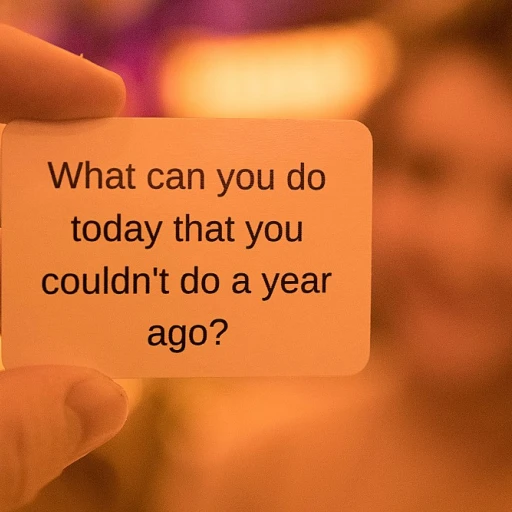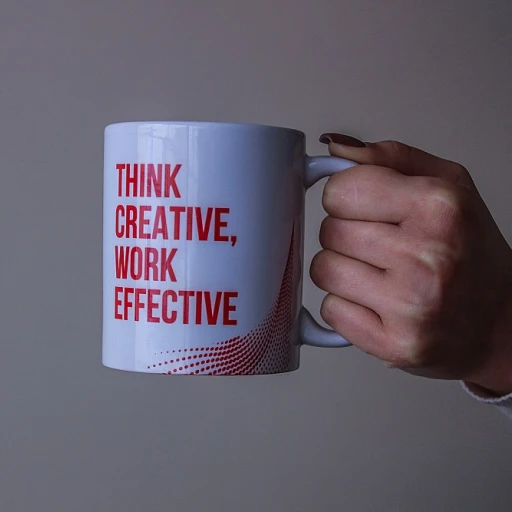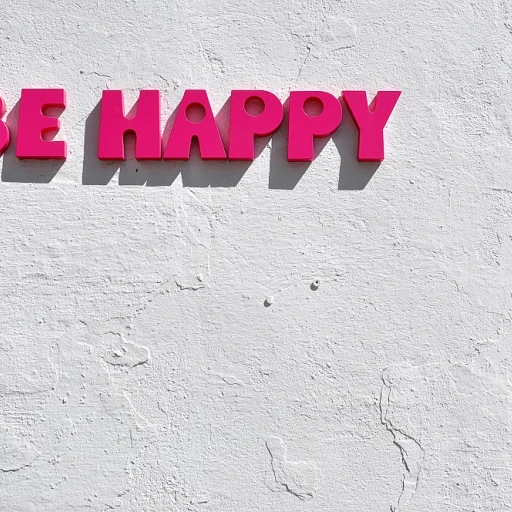The Critical Role of Cover Letters in the Job Search Ecosystem
Unveiling the Significance of Cover Letters
In the intricate dance of job seeking, the cover letter plays a pivotal role, often setting the stage for the candidate-employer relationship. While innovative career coaching redefines navigation through professional growth, the cover letter remains a classic tool, capable of thrusting you into the spotlight. Cover letters provide a voice to your resume, the human touch in your application that resonates with hiring managers. A recent study by the National Association of Colleges and Employers found that nearly 56% of managers consider cover letters influential when evaluating job applications.
More Than Just an Introduction: Strategic Value in Recruitment
Contrary to some modern job-seeking wisdom, cover letters have withstood the test of time, proving their worth as strategic complements to resumes. As the first point of contact, they deliver a personalized pitch, framing your resume's narrative and spotlighting your professional strengths. Cover letters reflect how eloquently you can communicate that you're not just a suitable candidate, but the best fit for the position. The optimal cover letter intertwines the individual's career aspirations with the company's direction, a harmony sought by hiring managers keen on finding not just skills, but alignment and potential contribution to company culture.
The Synergy Between Cover Letters and Personal Branding
Much like a press release for a product launch, a cover letter announces your candidacy with a distinct voice. It must echo the professional brand you've meticulously built, showcasing your unique propositions and the value you promise to bring to the prospective employer. A survey from CareerBuilder shows that 49% of HR managers consider a cover letter the second best thing to a referral. This underscores their weight in your job application package, magnifying their indispensability for job seekers serious about climbing the career ladder.
Connecting the Dots with Cover Letters
Cover letters allow you to connect your professional experiences with the objectives of the company you’re eyeing. This task requires a fine-tuned approach, one where strategic writing pairs with a keen understanding of your own career narrative and the job's requirements. It's about piecing together a compelling story that a list of achievements on a resume simply can't convey. Where a resume might only whisper your qualifications, a well-crafted cover letter shouts your readiness and fit for the role. Such a bespoke letter can become the clincher in a pool of applicants, provided it's penned with precision, reflecting not only where you’ve been but also where you aim to go with this new opportunity.
Final Thought: Cover Letters as Strategic Artifacts
At the heart of the job search process, the art of writing cover letters endures as a critical component, a valuable player in the job searcher's kit. They are far more than just a customary piece of the application puzzle; they're strategic artifacts that can sway the hiring trajectory in your favor. Cover letters offer a unique space to flourish professionally, a personal stage to amplify your career melody in the grand orchestra of the job search ecosystem. For those looking to advance, omitting this piece could mean missing a beat in the symphony of career progression.
Writing a Compelling Introduction: Starting Your Cover Letter Strong
Your Opening Act: Crafting a Memorable Introduction
The initial lines of your cover letter can make or break the engagement with your potential employer. Imagine your cover letter among a stack of many; what makes yours stand out? A strategic splash in your professional narrative can be the hook that captivates the hiring manager. Begin by expressing genuine enthusiasm for the company and position, and succinctly connect it to a key professional accomplishment that reflects your suitability for the role. Remember, brevity coupled with impactful storytelling paves the way for a powerful introduction.
Personalization Pioneers Connection
Address your cover letter to someone specific whenever possible. 'Dear Hiring Manager' is the safety net of salutations, yet it lacks the personal touch that a 'Dear [Name]' can convey. If the job description doesn't reveal a name, a swift search on LinkedIn or a company website can often unearth the information you need to personalize your greeting, showing your commitment and attention to detail.
Powerful First Impressions: Aligning with the Job Narrative
Now, infuse your opening with relevance. Scrutinize the job description and express how your unique blend of skills and experience meets the specific needs of their team. For instance, if a job calls for a 'creative problem solver,' briefly illustrate how you've embodied this trait in past roles. According to studies, aligning your qualifications with the job requirements can increase your chances of getting noticed by up to 50%.
Emphasizing the Wow Factor
What's the crowning achievement that makes you the ideal candidate? Select an accomplishment with measurable outcomes; statistics and figures resonate and provide evidence of your competence. Did you increase sales by 30% in your last position, or streamline processes to save 20 hours of work per week? These numbers offer tangible evidence of your contribution and potential.
Matching Your Skills to the Job Description: A Strategic Approach
Tailoring Your Talents to Meet the Job's Needs
When it's time to bridge the gap between your expertise and what the hiring team is seeking, pinpointing every nuance in the job description is your strategic lifeline. An in-depth analysis and understanding of the job listing is not just recommended, it's a critical maneuver in drawing the direct lines between what you've accomplished and what your potential employer needs. Call it the 'fit factor'—a term coined by Daniel A. White, a recruiting specialist and author of 'Career Mapping: Charting Your Course in the New World of Work.'
Dissecting the Job Description for Insightful Connections
Your homework starts with dissecting the job description—every bullet point, ask, and requirement. But here’s the twist: aim to uncover the 'between-the-lines' skills. It's about more than proficiency; it's about identifying the core competencies that spell out success for their team, which a study by the American Management Association indicates are often embedded in the way responsibilities and expectations are described.
Mirroring Language for a Reflective Response
Next, take a beat to mirror the language from the job posting in your cover letter. Experts suggest that this not only shows attention to detail but also helps you pass through applicant tracking systems (ATS). A stellar cover letter that mimics the phrasing from the job listing can pique the interest of Amy Roberts, the hiring manager you're trying to impress, because it reflects a precise understanding of what the company needs—whether they're pinpointing 'dynamic team players' or looking for 'strategic problem-solvers.'
Metric Magic: Quantifying Your Qualifications
Let numbers tell the tale where possible. 'Including quantitative achievements in your cover letter proves your ability to deliver tangible results,' advises career coach John Miller. It's one thing to profess that you're a 'driven sales manager'; it's another to present that you 'increased sales by 25% over a six-month period, exceeding targets by 15%.' These metrics craft an evidence-based narrative that hiring managers like Sharon Taylor, mentioned in our report on 'Hiring Trends and Analysis,' find irresistible.
By aligning your skills with the job description meticulously, you transform your cover letter from a monologue about your career history into a compelling case study reflecting the match between your professional journey and the job at hand. For more strategic approaches to career growth, consider exploring company strategy insights that can further enhance your job search tactics.
Narrating Your Professional Journey: Storytelling in Cover Letters
Your Career Tale: Weaving a Narrative in Your Cover Letter
Every career is a tapestry of experiences, skills, and milestones. When you write a cover letter, you're not just providing a summary of your resume—you're crafting a narrative that conveys the essence of your professional journey. It's like creating a selective autobiography, pinpointing the moments that are most impactful for the position you're after.
The Essence of Effective Storytelling
A great cover letter will tell a story that connects your past achievements to the future you envision with the prospective employer. It's not enough to mention you increased sales or led projects. What were the challenges? How did you overcome them? What did you learn? And critically, how do these accomplishments map to the needs of the company you are reaching out to?
Quantifying Triumphs
Specificity is key. Saying you improved customer satisfaction is fine, but quantifying how you boosted customer satisfaction scores by 20% during your tenure speaks volumes. If you've received accolades or have been publicly recognized, this is where they shine—a testimonial to your impeccable work ethic and skills.
Linking Chapters
Your cover letter should connect each role and project in a way that shows progression and growth. Just as any career path is not without its twists and turns, your narrative should demonstrate resilience and the capacity to learn and adapt. Remember to align these stories with the skills qualifications and job description of the position you're vying for, bridging the gap between what you've done and what you can do for them.
Bringing Personality to the Page
Employers are on the lookout for individuals who will be a good fit for their team, culturally and skill-wise. Infusing your cover letter with elements of your personality shows the hiring manager there’s a human behind the achievements and the skills. It's about making them see the person in the paragraphs, someone they can envision thriving in their company's environment.
Plot Twists: Addressing Gaps and Changes
It's not unusual to have gaps in employment or to make a career pivot. Cover letters provide a unique opportunity to frame these in a positive light. Explain clearly and assertively how these experiences contributed to your professional development and prepared you for the role you're applying for. Perhaps that gap year was spent volunteering, building invaluable soft skills like teamwork and communication, or you took a course to upskill. Make it part of your compelling professional narrative.
Addressing the Employer: Personalization Techniques for Impact
Personal Touch: Crafting a Unique Salutation
When you're setting out to nab that coveted position, every detail matters—especially how you address your potential employer in your cover letter. The goal? To go beyond a sterile 'To whom it may concern' and strike a chord with the person on the other receiving end. Research shows aligning your cover letter’s tone with the company’s culture increases the chance of it resonating with the hiring manager. Names matter; directing your letter to a specific individual showcases your attention to detail and initiative. A CareerBuilder survey found that 26% of hiring managers prefer a cover letter that's addressed to them personally—it gives your application a touch of authenticity in a pile of generic appeals.
Insider Insights: Harnessing the Name Game to Your Advantage
Finding the right name might take a bit of sleuthing, but it's worth the detective work. If the job posting doesn't mention a name, a quick look at the company's LinkedIn page or website could yield fruitful results. Don't hesitate to call the company's front desk either; a simple inquiry about the hiring manager for the position can work wonders. A Garamond survey pointed out that more than 84% of candidates don't take this step, setting you apart if you do.
Context Matters: Tailoring Your Prose
Understanding your audience is invaluable. Reference the language used by the company in its job description, aligning your letter's approach with the firm's ethos. When you speak their language, you not only display cultural fit but also prove you've done your homework. And it pays off—studies suggest that candidates who tailor their applications are 40% more likely to get an interview. Employing this career center tactic of aligning your tone can elevate your job application to the top of the pile.
Connection Points: Referencing Mutual Contacts
If you have a professional connection to the employer or someone in the company, mentioning this in your letter can establish immediate rapport. According to a recent report, referrals make up 30-50% of hires in the US. It's a powerful endorsement of your network and professional standing. Just be sure you have permission from your contact to use their name. And when you do, it’s not just name-dropping—it's strategically leveraging your professional ecosystem.
Finessing the Address: Making Location Work for You
In your opening lines, if it's relevant, mentioning your location can be strategic, especially if the job is in a highly coveted area or if your proximity to the job location is a logistical advantage. A survey from the Career center found that being local can be a bonus, as it can translate to less onboarding time and indicate long-term potential. When you weave in this detail, it's not just about where you are—it's about where you can take the employer with your local insight and readiness to jump in.
Optimizing Cover Letter Format and Design for Readability
Ensuring Clarity and Consistency
Imagine your cover letter is the front cover of your professional storybook. To invite the reader in, clarity and consistency in format and design aren't just nice to have; they're critical. According to a study by Career center, recruiters spend an average of 7 seconds on an initial resume and cover letter scan. This only underscores the importance of a neat and easily navigable cover letter. Using professional fonts like Garamond and adhering to a business letter format, like that outlined by the Career center, aren't just details; they're your first handshake with the hiring manager.
Aesthetic Balance: More Than Meets the Eye
While content is king, the visual appeal of your cover letter can enhance or detract from your message. Strategic use of white space makes your document less daunting and guides the reader’s eye to key information. Balance text with enough space to breathe; a cluttered page is a turn-off. Forbes reports that 78% of employers value clear and effective information design in application materials, making aesthetic balance a non-negotiable element of your cover letter.
Font and Size: The Subtle Art of Typography
Typography choices can make or break the first impression. A survey from the Career Center has found that 12pt Garamond is not just a safe bet; it's preferred for its readability and professionalism. This extends beyond the typeface; your font size and formatting choices either invite your reader to continue or push them away. Experts like those at C-suite Strategy recommend sticking to standard fonts and sizes to maintain readability and to show your respect for industry norms.
Bullet Points and Emphasis:
Effective use of bullet points can draw attention to your skills and qualifications in a digestible format. Done right, they echo the precise matching of your abilities to the job description detailed since crafting a great cover letter and resume isn't just about listing experience; it’s about highlighting your fit for the position. Experts recommend bullet points to break up text and emphasize critical achievements without overwhelming the reader.
Personal Touch with Professional Polish
The content of your cover letter should be as tailor-made to the job as a bespoke suit. This isn't just about your words; the format speaks volumes too. Incorporate just enough personal creativity to stand out while remaining within the professional norms, as too much deviation can risk your letter being seen as unprofessional. In fact, 60% of hiring managers prefer a cover letter that fits the standard format but has a personal twist that speaks to the candidate's individuality, according to a report from the Career Center.
Alignment with Your Resume
A great cover letter complements your resume, continuing the narrative with deeper insights. According to Career center insights, consistent formatting between the two documents reinforces your personal brand and demonstrates attention to detail. Ensure your header, font, and overall style match, creating a cohesive package that sells you as the prime choice for any employer. If your resume is the snapshot, your cover letter is the full-length portrait, both styled to impress and inform.
Final Run-through for Form and Function
Before you attach your cover letter to your email or print it out, give it one last look for form and function. Confirm that your contact information is complete and correct, with your email address and phone number easy to find. A Career center study showed that simply including clear contact information increases your chances of a response by 22%. Final proofreading and an eye on design could be what puts your cover letter at the top of the stack.
The Dos and Don'ts of Cover Letter Attachments and Email Etiquette
Best Practices for Adding Cover Letter Attachments
When you're in the thick of the job search battles, your tools should be sharp and ready. Your cover letter could be the ace in your professional sleeve. Yet, a cover letter's impact can dwindle if attachments or email protocols aren’t navigated with savvy. A whopping 83% of recruiters agree that a well-written cover letter can make up for a subpar resume, according to a recent study from CareerBuilder. So, make sure yours is not just an addition, but an asset.
Email Etiquette: Making a Professional First Impression
Email is often the first point of touch with a potential employer, and your digital handshake should be as firm as your actual one. The salient point here is clarity. Use a professional email address—ideally one combining your first and last name—although 76% of resumes are discarded for having an unprofessional email address, reports a study referenced by HuffPost. Meanwhile, your subject line should be eye-catching yet precise, encompassing the position you’re applying for. Mentioning the job title and your full name is a litmus test for email subject prowess.
Formatting Attachments for Universal Accessibility
The goal is to deliver your cover letter and resume in a format that preserves your careful formatting and is accessible across all devices and platforms. PDFs are your ally here, as they maintain your documents' appearance, and hiring managers won’t need to wrestle with compatibility issues—who wants extra friction in a competitive job market?
Following Up without Being Overbearing
A strategic follow-up can underscore your keenness for the role without crossing into nuisance territory. A CareerBuilder report presents that a staggering 57% of job seekers do not send follow-up emails or letters. A short, courteous email a week post-application confirms your interest and keeps your name afloat in the hiring manager’s mind. Remember, persistence is a virtue in moderation.
Attachments and Privacy Considerations
Keep in mind, especially for email transmission, that security is essential. While a cover letter should trumpet your triumphs and tenacious spirit, refrain from oversharing sensitive information such as your Social Security Number. According to a CareerBuilder survey, 22% of hiring managers disregard applicants that share too much personal information.
Proof of Success: Incorporating Metrics and Testimonials in Your Cover Letter
Showcasing Results with Numbers
To truly stand out, peppering your cover letter with quantifiable achievements can deliver a knockout punch. It's like telling a gripping tale where numbers serve as the climax. For instance, rather than vaguely stating that you've increased sales, specify by how much: "Boosted sales by 30% over a six-month period." Such statistics are not just impressive, they make your contributions tangible for the hiring manager.
Adding Testimonials for Credibility
Incorporating testimonials into your cover letter resonates with employers because it's like providing a live reference. When a respected professional vouches for your capabilities, it can leave a lasting impression. Picture a line like, "As my previous manager, John Doe, said, 'Alex's innovative strategies expanded our market reach and brought in a new customer base.'" This endorsement can reinforce your expertise and reliability.
Demonstrating Impact through Case Studies
Integrating brief case studies from your career experience pinpoints your problem-solving skills and how you drive results. Align these stories with the company's goals. Say the job application emphasizes innovation, you might write about the time you pioneered a product feature that solved a customer pain point, detailing how it led to a surge in customer satisfaction scores.
Getting Specific with Contributions
Wrap your cover letter with specific and relevant examples of your work. If you led a project, mention the scope and the outcome, "Managed a team of 10 to deliver ABC project, which enhanced process efficiency by 20%." Provide context to your claims to give the hiring manager a snapshot of your proficiency in action and your potential contribution to their company.
Each nugget of proof you offer transforms your cover letter from a mere formality into a compelling case for your candidacy. When done effectively, the cover letter compliments your resume by adding a human touch to the numbers and narratives that define your professional journey.








-large-teaser.webp)





